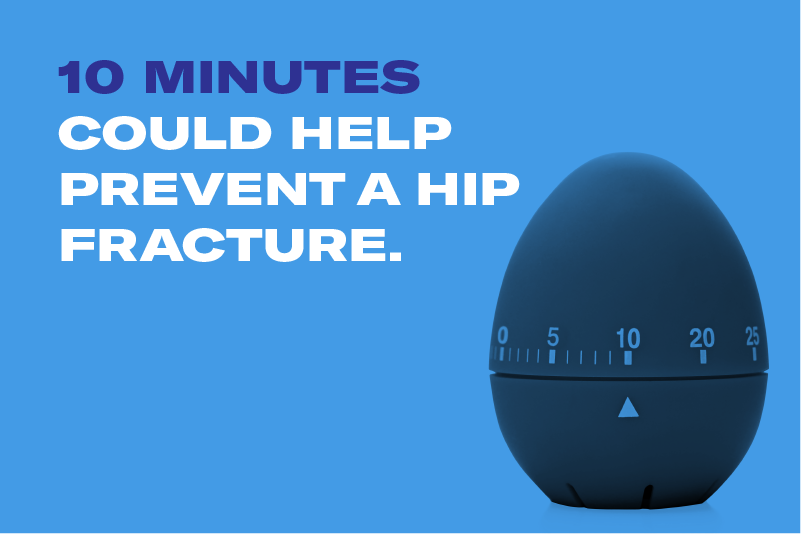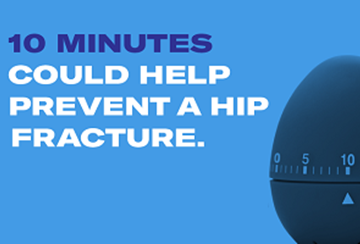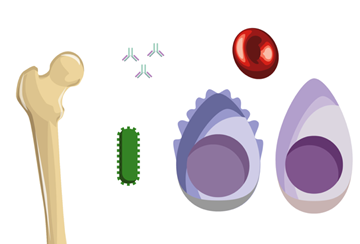Why a fracture risk assessment is a smart use of 10 minutes
There are lots of productive, fun and healthy ways to spend 10 minutes — walking the dog, a short meditation session, or taking a stab at solving a sudoku puzzle, for example.
Did you know assessing your risk for osteoporotic fractures might also take 10 minutes or less? A fracture risk assessment is a small investment of time that could pay off as you age. Osteoporosis can put you at risk of a fragility fracture including a hip fracture, leading to serious repercussions that can have a negative impact on every moment of the rest of your life.
Meanwhile, you may not experience any signs of osteoporosis as a forewarning. Many people don’t know they’re at risk of a fragility fracture until they break a bone — researchers have called it a “silent disease” for that reason.
That’s why it makes sense to be proactive about osteoporotic fracture risk assessment.
What’s an osteoporotic or fragility fracture?
Osteoporosis is a disease associated with a loss of bone mass density, which in turn causes fractures as the bones become more fragile. At least one in three women and one in five men over the age of 50 around the world will suffer an osteoporotic fracture.
These fractures are serious: They can lead to long-term pain and suffering, disability and increased risk of death. Many patients lose their independence after a fragility fracture such as a hip fracture— they may lose the ability to walk independently, for example, or may be unable to live on their own.
When osteoporosis causes spine fractures, these are known as vertebral compression fractures. These can result in a loss of height, deformity, immobility and even reduced lung function.
Even worse, many patients with osteoporosis suffer a hip fracture and according to Osteoporosis Canada, 28 per cent of women and 37 per cent of men who suffer a hip fracture in Canada die within a year.
An osteoporotic fracture isn’t just a broken bone. It’s a change that can happen in a heartbeat and profoundly affect your life from that moment on.
Amgen is committed to spreading awareness of the risks and signs of osteoporosis because the disease is so common and has such a catastrophic impact.

Investing a few minutes in your future quality of life
When you begin the conversation about your bone health, your doctor may recommend a fracture risk assessment tool for osteoporosis.
A FRAX osteoporosis risk assessment test is a questionnaire that healthcare professionals use to estimate your 10-year risk of an osteoporotic fracture as well as a risk of a hip fracture. Your FRAX score is based on factors including your age, habits, and past family history of fragility fractures.
Osteoporosis Canada guidelines advise doctors to begin administering fracture risk assessment tests once a patient reaches age 50. However, you might consider talking to your doctor even sooner if you exhibit certain risk factors associated with low bone density and fractures, including smoking, early menopause, low body-mass index (BMI), rheumatoid arthritis.
There’s no risk in starting the conversation about bone health now — but waiting too long could be risky. Talk to your doctor soon, and don’t waste a moment.





